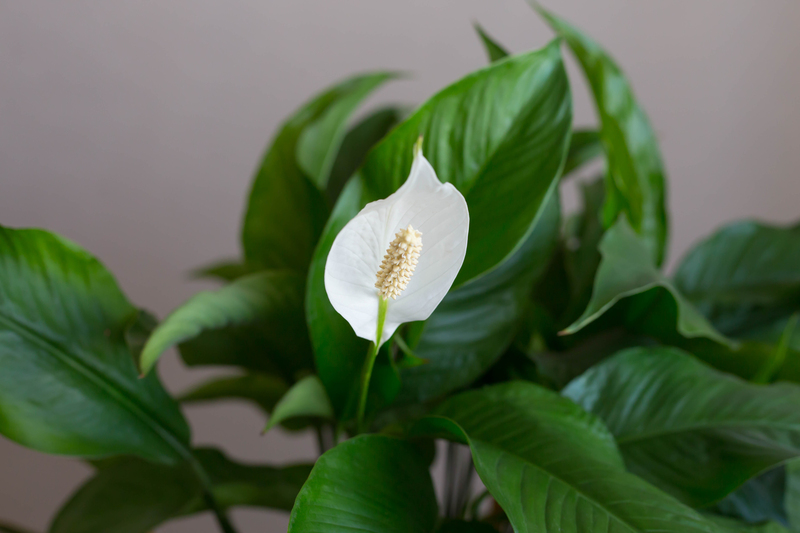Canine Companions in the Garden: Making it Work
Posted on 27/09/2025
Canine Companions in the Garden: Making it Work
For millions of pet owners, dogs are treasured family members and loyal friends. But what happens when your love for lush greenery collides with puppy paws? Striking a balance between canine companions and a thriving garden is possible. With thoughtful planning and practical tips, your garden can become a paradise for both you and your furry friend.
Why Include Dogs in Your Garden?
Integrating your dog into your gardening life offers multiple benefits:
- Physical & Mental Stimulation: Exploring new sights and smells can keep your dog happy and healthy.
- Bonding Opportunities: Spending time outdoors with your dog is excellent for deepening your relationship.
- Security: Dogs in the garden can deter unwanted animals and even burglars, making your space safer.
However, maintaining harmony between your pet-friendly landscape and a dog's natural curiosity can be challenging. Digging, trampling, and unwanted snacking are just a few common issues. Let's explore how you can structure your dog-friendly garden for mutual enjoyment.

Understanding Your Dog's Garden Behavior
Common Canine Behaviors in Gardens
- Digging: Many breeds (like Terriers and Dachshunds) are natural diggers. They may dig to create a cool spot, unearth small critters, or just for sheer fun.
- Chewing: Curious pups may chew on plants, pots, and even garden hoses.
- Marking Territory: Urination can lead to yellow urine spots on lawns and damage to certain plants.
- Chasing & Patrolling: Dogs love to patrol boundaries and may trample your precious flowers in the process.
Recognizing why your dog behaves this way is the first step toward a harmonious garden.
Planning a Dog-Friendly Garden - Design Tips & Principles
Canine companions in the garden require thoughtful design. Here are foundational principles for a successful dog-friendly landscape:
1. Secure Boundaries
- Install sturdy fencing or natural barriers to prevent escapes and protect sensitive areas.
- Consider buried chicken wire at the base of fences for expert diggers.
- Use self-closing gates to prevent accidental escapes.
2. Canine Paths and Patrol Routes
- Dogs love routine! Designate paths along the garden's edge where pups naturally patrol.
- Lay down durable, paw-friendly materials like decomposed granite, mulch, or flagstone.
- Maintain these routes to prevent wear and tear on lawns and flower beds.
3. Active Play Zones
- Set aside a dog playground with open space for fetch or agility equipment.
- Include dog-safe toys, sandpits for digging, or a splash pool for cooling off in summer.
- A designated dig area with loose, soft earth can satisfy their natural instincts.
4. Safe, Dog-Friendly Plants
- Choose non-toxic plants that won't harm your dog if chewed or eaten. Some popular safe plants include sunflowers, snapdragons, marigolds, and rosemary.
- Avoid plants like lilies, foxglove, sago palm, azaleas, and daffodils, which are poisonous to dogs.
- Opt for sturdy perennials and shrubs that can handle a bit of roughhousing.
5. Shade and Fresh Water
- Plant trees or build canine cabanas to offer respite from the heat.
- Ensure your dog has access to fresh, clean water at all times while outdoors.
6. Mulch & Ground Cover Choices
- Avoid cocoa mulch, which is toxic to dogs. Opt for cedar mulch, pine needles, or untreated wood chips.
- Consider clover, creeping thyme, or lawn alternatives that withstand wear and tear.
Practical Tips for Maintaining a Garden with Dogs
Add Barriers & Visual Cues
Low, decorative fencing or dense shrubs around beds signal to your dog that certain areas are off-limits. Pebble mulch, rocks, or driftwood edges also help discourage unwanted exploration.
Dog Training for Garden Etiquette
- Positive reinforcement: Train your dog to avoid 'no-go' areas using treats or clicker training.
- Supervised introduction: Initially supervise garden time, redirecting unwanted digging or chewing.
- Practice basic commands such as "leave it," "stay," and "off" to reinforce boundaries.
Dealing with "Dog Spots" on Lawns
- Encourage urination in out-of-sight areas by training your dog and offering rewards.
- Water down spots where your dog urinates to dilute nitrogen-rich urine and prevent yellow patches.
- Use dog-resistant grass varieties like ryegrass or fescue for added resilience.
Pest and Chemical Control
- Avoid pesticides, herbicides, or fertilizers that can be hazardous to pets.
- Use non-toxic, pet-safe alternatives such as diatomaceous earth for pest control.
- Keep compost piles fenced so curious noses don't get into trouble.
Dog Breeds and Garden Compatibility
Which Dogs Make the Best Garden Companions?
Some dogs are better suited to gardens than others. Generally:
- Low-energy breeds like Greyhounds, Bulldogs, or Basset Hounds are less likely to wreak havoc than high-energy terriers or sheepdogs.
- Small dogs may cause less damage than large, boisterous breeds--but each dog is unique!
- Young puppies often require more supervision than mature dogs.
Regardless of breed, proper training, exercise, and enrichment are essential for keeping all pups well-behaved among your blooms.
Garden Safety for Canine Companions
Potential Hazards to Watch For
- Sharp garden tools left on the ground can injure an inquisitive pet.
- Certain fertilizers and slug baits are highly toxic if ingested.
- Standing water in bird baths or ponds may harbor algae or bacteria.
- Spiked plants or cacti can puncture paws or muzzles.
Store tools, chemicals, and breakables out of reach. Regular garden inspections help prevent problems before they arise.
Creative Ideas to Engage Your Dog in the Garden
Enrichment Activities
- Scatter treats or kibble in designated areas to encourage scent games and foraging.
- Hide dog toys or balls for a fun, interactive scavenger hunt.
- Use dog puzzle feeders or sand pits for digging play.
- Set up mini agility courses for energetic breeds, using hurdles, tunnels, or weave poles.
Dog-Friendly Features Add Value
- Install a viewing bubble in your fence so Fido can supervise the neighborhood safely.
- Add a dog-sized shady den or rustic log bench for lounging.
- Design a "doggie window" with open fencing for curious noses.
Seasonal Garden Care with Dogs
Spring & Summer Tips
- Check for ticks after garden play.
- Keep fresh water available; watch for signs of overheating.
- Replenish mulch in high-traffic areas for paw comfort and appearance.
- Supervise if fertilizers or organic feeds have been recently applied.
Autumn & Winter Wisdom
- Rake leaves to avoid moldy piles, which some dogs find irresistible (and possibly harmful to eat).
- Clear icy paths and use pet-safe ice melts. Regular salt and deicers can irritate paw pads.
- Wipe paws after walks to prevent mud and chemical intake.
Balancing the Needs of Your Garden and Your Dog
Key Strategies for Harmony
- Compartmentalize: Divide your garden into 'dog zones' and 'protected zones' as needed.
- Routine: Dogs thrive on routine - regular walks, garden play, and feeding make behavioral issues less likely.
- Compromise: Accept a few paw prints or trampled corners in exchange for the joy your dog brings.
- Observation: Watch how your dog interacts with garden features and adapt designs accordingly.

Frequently Asked Questions about Dogs in the Garden
Can dogs and vegetable gardens coexist?
Yes, with proper boundaries. Fence off vegetable plots or raise beds to keep canine noses out of edible crops, and avoid using animal manure compost. Always wash harvested produce before eating.
How do I stop my dog from digging up plants?
Provide a dedicated dig zone with soft soil or a sandpit. Reward your dog when they use it and redirect them if they dig elsewhere. Physical barriers and training reinforce proper boundaries.
Are bark chippings safe for dogs?
Most untreated bark and wood chips are fine, but avoid cocoa mulch and chemically treated wood. Observe your dog for chewing habits, as eating mulch may cause digestive upset.
What if my dog keeps eating grass?
Grass eating is common and usually harmless, but excessive grazing can indicate boredom or digestive issues. Make sure grass is pesticide-free and offer alternative chews or food puzzles.
How can I protect flower beds from a curious pooch?
Low fencing, dense plantings, or decorative rocks around beds can act as obstacles. Ultilize training and positive reinforcement to teach your dog garden boundaries.
Conclusion: Growing Together in Harmony
Sharing your garden with a beloved dog doesn't mean sacrificing your green oasis. With the right garden design, training, and plant choices, you can nurture both healthy dogs and vibrant landscapes. Remember to embrace a little imperfection--after all, muddy paws and happy tails are a small price to pay for the loyal company and joy of your canine companions in the garden.
Begin transforming your garden into a dog-friendly retreat today, and enjoy every wag and bloom together!

